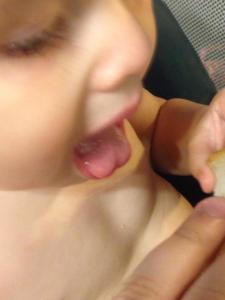A Beginner’s Guide to
Augmentative & Alternative Communication
Written by: Rachel Ball, MS, CF-SLP
Singing along to your favorite song in the car. Ordering food at the drive-thru. Saying, “I love you” to someone special. Speech is often a concept taken for granted in our day-to-day activities. However, for many people, verbal output is not a viable option for communication.
When an individual is unable to use speech to communicate functionally, families and caregivers are often directed to seek out alternative options. It can be a daunting task when choosing what mode of communication works best for your loved one. Outlined below are terms and definitions that are useful for navigating through the confusing world of acronyms and jargon common to professionals in the field of assistive technology and alternative communication.
Assistive Technology (AT): An umbrella term that encompasses any item, equipment, software or product system that is used to increase, maintain, or improve the functional capabilities of individuals with disabilities. This information and more can be found here.
Augmentative and Alternative Communication (AAC): Any mode of communication other than speech. Some examples include facial expressions, gestures, symbol systems (e.g. PECS), pictures, writing, sign language and high tech communication devices. The American Speech-Language Hearing Association explains more here.
Augmentative Communication Device (ACD): Equipment used as an alternative and/or supplement to speech for communicative purposes. ACDs help individuals overcome their inability to speak due to a disease or medical condition that interferes with participation in daily activities. Examples include communication picture books/boards, speech amplifiers/enhancers and electronic devices that produce speech or written output.
Speech-Generating Device (SGD): Electronic AAC devices that produce digital or synthesized speech as a result of selections made by the user. They are often used to supplement or replace the natural speech and/or writing for individuals who have severe speech impairments. SGDs can also be referred to as voice output communication aids (VOCA).
Dedicated: Communication devices that have hardware and software designed to be used strictly for communication purposes. In contrast to integrated devices, dedicated ACDs do not have the capability of accessing other features common to your everyday tablet (e.g. applications, internet, music, camera, etc.)
Core Vocabulary: Words that are most commonly used in a language. Usually core words consist of pronouns, simple verbs and helping verbs, articles and prepositions. Core vocabulary is typically more general and can be used across a wide range of settings with various communication partners. Much research has been done to define the “best” set of core words, leading to differences in software/programing for ACDs.
Fringe Vocabulary: A more specific set of words that lend themselves to the individual, environment or topic. Fringe words are often nouns and specific verbs. Every AAC user has a unique set of fringe vocabulary that best fits their needs, and people’s fringe expands according to their own experiences. These words are not often found at the forefront of an ACD, as they are not used with as high of frequency as the core set. In the example below, the fringe words are in bold, italicized font.
“I want to go swing at Oak Park with Bobby and Suzy, please.”
Explore some more!
Check out the links below to learn more about the wonderful world of AAC.
http://www.asha.org/public/speech/disorders/AAC/
https://www.isaac-online.org/english/what-is-aac/
http://www.atia.org/i4a/pages/index.cfm?pageid=1
Contact us via social media, email, or by phone for more information about AAC!
417-890-4656








